T.R. Robinson's Blog, page 4
April 13, 2021
Authors and Social Media
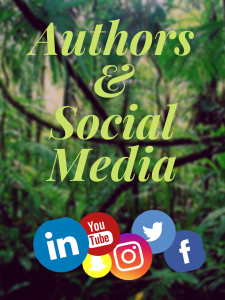
This article was inspired by some self-posed questions: ‘Do authors have to be everywhere on social media?’ was the instigating question. This morphed into: ‘Do authors need social media?’ and ‘Do authors have to use social media?’ These resulted in this article that will attempt, in measure at least, to address those questions.
Before continuing it is worth considering the actual aspect of social media. The Cambridge Dictionary defines social media as: ‘Websites and computer programs that allow people to communicate and share information on the internet using a computer or mobile phone.’ A concept nearly all are now familiar with. Just in case there is any confusion: a social media site is in reality a website supported by various computer programs and software for things such as likes, comments, sharing, etc.
There are mixed opinions relating to social media. Some people really enjoy using it while others find it a bane. And, surprising as it may be for some to hear, there are people who do not, and have never, used or even been on a social media site. Nevertheless, even they are aware of its existence.
To try and do this topic justice, and to provide best possible insights, the two aspects of the detriments and benefits of social media will be considered. These will be followed by thoughts upon how an author may accommodate, deal with, or ignore, social media.
This article is dedicated to authors though some of the aspects discussed may also be relevant to others.
Detriments of Social MediaTakes time from writing.Is distracting.Algorithms often limit visibility.Out of user control.Contains spammy behaviour.Often poor return on investment.Can be depressing and draining.May become addictive.Can fuel a fear of missing out (FOMO).May be withdrawn without notice.Obviously, this is by no means an exhaustive list, nevertheless, it helps concentrate the mind.
Benefits of Social MediaConstantly active (There are billions of users).Ease of communication.Enables regular contact with relatives and friends.Interactivity (Most sites are interactive).Communities for a variety of interests.Can be entertaining.May provide insights and knowledge.Most sites provide an advertising platform.Again, this is hardly comprehensive but does highlight some of the primary benefits many will identify with.
Do Authors Have to Use Social Media?The instinctive answer for most is a resounding yes. But is that true? The wide uptake of social media, in all its forms and caricatures, is probably the driving force behind such a positive response. Nevertheless, is social media really a necessity? May authors do without it? Why do some people consider authors cannot do without it?
A consistent challenge for authors, especially independent (indie) ones, is gaining attention and establishing a base of dedicated readers, not to mention attracting new ones. Because of its wide uptake and regular activity, social media is a natural go-to. After all it is where a large proportion of the population, together with many readers, not to mention fellow authors, may be found. However, there are a few established, notable, authors who have never bothered with social media and who in fact detest it. And yet, they are successful and make a living from their writing.
Most authors, especially indie ones, feel they have little choice but to utilise social media if they wish to get knowledge of their book’s existence into the wider world. Without it they fear their darling project will wither and die. In reality, it must be acknowledged this is a possibility. Nevertheless, despite that possibility, should authors force themselves to be active on social media when they detest, or even hate, it, or perhaps simply find it annoying? There are dangers in doing so.
Where the author does not feel engaged but does feel pressurised it is very likely the posts, tweets, pins, etc., they draft will be, and come across as, stilted and forced. Consequently, they are unlikely to resonate with readers and may in fact turn potential audiences off. Undoubtedly, in these circumstances, the focus will err toward ‘selling’ terminology rather than building relationships and a community, which should be the primary aims. Book selling may follow once some degree of trust and authenticity has been achieved. If anyone thinks they are leaning toward the aggressive selling ethos they would be better off abandoning the social media option and actively seek alternative means for bringing knowledge of their writing and books into the public domain. Some ideas are shared below.
So far most of the above has been on the negative side however, there are many authors who enjoy, even love, social media. They are in their element chatting with people in the environment and within some of the communities and groups within it. Some have even set up their own groups. Many have established a dedicated fan and reader base by such means and continue to attract new readers through it. This is good and provided they continue to enjoy it, they should carry on.
It must be recognised, despite some of the limitations introduced due to various companies and organisations focusing more on revenue, social media is a golden pot of activity. Every day millions, probably billions, of people utilise it for communication and discovery. Many businesses now recognise its potential and are consistently active on it. The various advertising opportunities have also made it a popular resource for those with the means to pay.
Alternatives to Social MediaWhat may those, who do not like social media and who have no wish to use, do? As mentioned there are some successful authors who do not bother with it. What alternatives are there? Some suggestions, most of which those authors have utilised in one form or another:
Regular posting in blogs utilising effective SEO.Guest posting on other peoples blogs.Email (e.g. newsletter; direct contact; etc.)Join, and be active in, live or online discussion groups.Participate in speaking events (live, podcast, or video).Cross promote with other authors.Join book clubs.Attend book fairs.Set up competitions.Conduct giveaways.Contact influencers.Market through retail sites.Seek to utilise traditional media. (Can be difficult but not impossible.)Utilise content distribution engines. (E.g. Quora; Reddit; etc.)As with the other lists, these are only some possibilities. No doubt many reading this will have further ideas and experiences. Please share by means of a comment.
Not mentioned is the option of paying someone else to undertake social media activity on behalf of the author. The fact is, most indie authors do not have the means to do this and even if they have, need to consider whether possible returns (sales) will justify or balance the cost.
One consistent is, to write good quality books and, assuming the author maintains a website (recommended) and/or blog, good quality, valuable, articles.
General AdviceFor those authors who choose to utilise social media, general advice is to try out each site one or at most two, but no more, at a time. Thereby they may assess: whether the site suites their taste, aims, and abilities; whether the general content is relevant to them and their books; and whether they are likely to find the audience they seek therein. Subsequently, they may test a further one or two, and so on, until they discover which are a suitable fit.
Further advice is to determine what, for them, really matters. What is important to them? What it is they truly wish to achieve? Once decided they may look round for facilities that may fulfil those desires and intents.
Naturally, an integral part of all this is discovering where the readers and writers they wish to connect with spend their online time. Which social media sites they use? Where they have their most productive conversations? Where they may be contacted?
ConclusionAuthors do not have to utilise social media however, it does open avenues of communication wherein billions of users are active.
Those who prefer not to bother with social media still need to accept there is a need for some sort of communication channel, to get knowledge of their books out into the wider world and to readers who are seeking the sort of content they provide.
Social media can be a pain and will often not give a good return for investment, whether time, money, sweat, or tears. However, for those who enjoy the option, it may prove fulfilling even if it does not result in many sales. That said, the likelihood is their interaction will, may, lead to the community they share in becoming curious about their books.
Whatever the personal preferences, it must be acknowledged, and accepted, non established authors, especial indie ones, need to seriously consider utilising at least some of the social media available. After all, it is where billions of people spend their time. But, to reiterate, it is not a must; the choice is entirely the authors.
Social media in itself is not evil but its value is often diminished by improper and unwarrantedly rude and offence use. In addition, the increasing lean toward revenue strings, and consequent diminishment in organic reach, is having a negative impact for those authors will minimal or negative resources. The push toward advertising to get noticed is out of the reach of many.
This has been a cursory consideration on the topic of authors and social media but hopefully, it provides some insight for those unsure about the options.
Notice! – The next T. R. Robinson Publications quarterly newsletter is due IN A FEW HOURS. To obtain a copy subscribe here . (If not what wanted may easily unsubscribe at any time.)
April 9, 2021
Author Newsletter Content – Survey Results

~~~~~~~~
~~~~~~~~
A few months ago authors and readers where asked in Survey – Author Newsletter Content to indicate the type of content they would like to see in an author newsletter. The results are now in.
~~~~~~~~
~~~~~~~~
The three questions posed, together with responses follow:
What do you like to see in an author’s newsletter?Interviewees were asked to select as many as were appropriate to them.
80.0% – Details of new books published by the author?
60.0% – Insights into the author’s writing methods and habits?
29.6% – Latest news regarding publication sites and services?
25.9% – Accessible author tools?
44.4% – Recommended author resources or tools?
58.3% – Competitions in which you may win something free?
52.0% – Notice of new publications by other authors?
29.2% – Other (A variety of comments, questions, and observations were added which, where appropriate, will be addressed in a subsequent newsletter. Regrettably, circumstances prevented this being done in the next one that is due in a few days. Apologies to any waiting for an earlier response: such is life.)
How often do you like to receive a newsletter?Interviewees were asked to select one.
56.0% – Monthly?
19.23% – Bimonthly?
16.7% – Quarterly?
8.3% – Only when something new?
8.3% – Other (Comments point to some preferring not to receive newsletters and others only if they are written in personal voice. It is not possible to judge if these are representative of the majority but the indication is not.)
Do you mind receiving interim newsletters?Interviewees were asked to select one.
37.5% – No
12.5% – Yes
29.2% – Unsure
24.0% – Mixed (e.g. sometime okay but not always). (Comments under the Mixed option clarified recipients only prefer interim newsletters if there is something ‘significant’ or ‘important’ to convey.)
Survey AnalysisOverall the majority of recipients like to hear of new publications by the author and insights into their writing habits. These are followed, unsurprisingly, with interest in competitions from which they may win something free.
Over half like to receive a newsletter monthly and most do not mind receiving interim newsletters but principally only when there is something of value to convey.
Thanks are extended to all who took the time to participate. Responses have provided food for thought that will be taken into account for future newsletters.
SubscribeAnyone reading this, who has not subscribed so far may be interested to read the current proposed contents for newsletters from this site here.
The next newsletter is due in a few days. It will contain publishing updates; assessment of a new author resource; a new free author tool; details of latest or forthcoming publications. Subscribe NOW to receive it and a FREE bonus download of which there is a choice:
Click upon the red link of your choice.
Free memoir. (Can a child’s innocent voice avert a tragedy?)
Free Proofreading Checklist. (It is not easy for authors to proofread their own work. This check list has been designed to help with the task.)
Free Creating Characters Worksheet. (With so many elements to a characters persona it can be hard keeping them all in mind whilst writing. This worksheet is designed to help.)
If subsequent newsletter contents do not suit or meet expectations, the option for easily unsubscribing at any time exists.
As mentioned some questions and observations were posed in response to the survey which, where appropriate, will be dealt with in the next but one newsletter.
March 30, 2021
15 Twitter and Instagram #Hashtags for Connecting with Authors
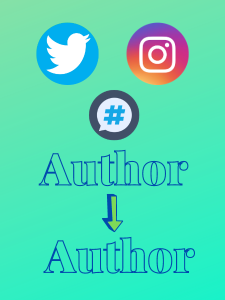
As the title implies this article relates to hashtags authors may utilise for connecting with fellow authors. Even the most introverted author will appreciate being part of a likeminded community. The comparative anonymity of online interaction helps those who seriously struggle with public exposure to share and learn.
New authors, and some not so new, can make the mistake of thinking because their primary aim and goal is to gain readers (who have hopefully purchased the book first rather than having been given it) they only need to communicate with them. That would be a mistake. Authors, especially in these days when independent (indie) authorship is in prominence, really should interact. Why? Well, first, it helps to know there are others who are facing the same issues and challenges and secondly, authors are also, or should be, readers. Authors may learn from each other, with those further along the path than their peers able to share knowledge and experiences. In their turn, they may also learn from the questions, issues, and resolutions their compatriots raise and share. It would be very arrogant for anyone to think they have nothing further to learn. No one ever knows everything. The truth is everyone continues to learn right up to the day they depart this world.
An article dealing with hashtags authors may utilise to connect with readers has been previously published. It may be accessed from either the link here or that at the end of this article.
To make this, as far as possible, a standalone article, some of the following will be a repeat of what has been previously shared. Undoubtedly, most people reading this will be familiar with the concept of hashtags nevertheless, just in case someone new to social media is reading this, here is a brief overview.
Hashtags are a way for users to highlight content as being relevant to defined topics, themes, events, conversations, etc. In effect a hashtag is the equivalent of a keyword that people use in descriptions of their product or service. Hashtags always commence with the # sign. This is immediately followed, without any space, gap, or punctuation, by the defining text. Where the text comprises more than one word, these must be strung together, again without any space, gap, or punctuation. Unless this is done the systems that monitor hashtags will not be able to read the full content. They will only recognise the #and immediately following text. For example: #authorevent will be read in its entirety and therefore indicate the content is related to exactly that: an author event. However, if the hashtag is written as #author event, only the #author part will be recognised. Consequently, though the content will be identified as relevant to authors it will not serve the user’s intent to draw attention to some event. Hashtags are also a means by which anyone interested in a specific topic, subject, theme, etc., may locate content relevant to it and where they may also find people with similar interests. Further information may be found in the previous Hashtags (#) article.
Some may ask why this discourse only focuses on 15 hashtags? The majority of articles relating to hashtags tend to simply provide a little background followed by endless lists of tags without any further insight. This does not really assist potential users of the tags. The intent here and in other similar articles is to provide some general observations with respect to each of the named hashtags, thereby enabling the user to make a more considered decision.
Regrettably, many authors abuse the hashtag facility by utilising inappropriate ones in an attempt to boost their self-promotional tweets and posts. To provide the information below, many #hashtags were examined and many had to be discarded because of this inappropriate use. Users (authors in this instance) should bear in mind a major constituent of social media is: to build relationships; to share meaningful content ; to engage in a positive manner; to relevantly contribute; etc. Constant advice is for people to remain on topic when contributing to a discussion.
Now to the primary subject of this article. The following should be noted before perusing the table below:
Hashtag choice: Many hashtags have been examined. The aim is to provide fifteen relevant and usable options authors may utilise for connecting with other authors. With the existence of hundreds, probably thousands, of hashtags it is not easy to find the most relevant but it is hoped the ones listed will assist those reading this article to achieve their aim.
General observations: These are based upon casual examination of a selection of tweets and Instagram posts which utilise the tag.
Popularity: The popularity of a hashtag has been determined through general observation and a few statistics encountered. The writer in unable to guarantee complete accuracy of the rating. Some of the tags listed below are top level under which users may also discover sub tags that may be more appropriate to purpose.
Limited: Tends to be mostly used by the same limited number of people.
Author chat; sharing; experiences: Authors sharing about their lives; writing, and publication experiences; and some miscellaneous insights or thoughts. Other similar identifiers are equally general and hopefully self-explanatory.
Gender: To formulate meaningful text it may help to know the breakdown between female and male users.
Age range: It is noticeable the age range of Instagram users remains consistent throughout. However, though there is some consistency, the same may not be said of Twitter users. Again, the age range may impact how someone chooses to phrase a tweet.
Note: The following list is no particular order. There is no preferential implication.
#HashtagTwitter(General Observations)Instagram
(General Observations)Gender
(Approximate Split)Primary User
Age Range#writingcommunity Popular
Author Chat. Popular
Mostly quotes and extracts.F – 52%
M – 48%TW: 25-34
INST: 18-34#amwriting Popular
Writing advice and observations.
Author chat. Popular
Author chat.F – 53%
M – 47%TW: 25-34
INST: 18-34#writerslife Limited
Author insights and experiences. Popular
Quotes, extracts and some author encouragement.F – 52%
M- 48%TW: 25-34
INST: 18-34#indieauthor Limited
Advice, services and some limited author sharing.Mostly Self-Promotion.
Some author chat.F – 46%
M – 54%TW: 25 – 34
INST: 18-34#authorhelpAuthors sharing insights and experiences.
Some inspiration, advice and services.Author inspiration.TW: F – 100%
INST:
F – 55%
M – 45%TW: 25-34
INST: 18-34#authorcommunityAuthor chat, advice.
Some author services.Author chat.TW: M – 100%
INST:
F – 55%
M – 45%TW: 25-34
INST: 18-34#writingtips Popular
Author advice and sharing.Author inspiration.TW:
F – 44%
M – 56%
INST:
F – 55%
M – 45%TW: 25-44 +
limited 18-24
INST: 18-34#writingadvice Authors sharing knowledge and experience.Authors and groups sharing writing insights.F – 56%
M – 44%TW & INST
18-34#aspiringauthorAuthor chat, sharing and advice.Author chat.TW:
F – 42%
M – 58%
INST:
F – 55%
M – 45%TW: 25-44
INST: 18-34#authorssupporting
authors Popular
Authors sharing other authors work.
Authors seeking and receiving advice.Author fun.
Author chat.F – 53%
M – 47%TW: 25-34 +
limited 18-24
INST: 18-34#writingabookAuthor chat and advice. Popular
Author chat and insights.TW:
F – 25%
M – 75%
INST:
F – 55%
M – 45%TW: 25 – 34
INST: 18-34#writingproblemsAuthors sharing experience.
Author chat.Authors sharing insights.F – 53%
M – 47%TW: Predominantly: 18-24
Substantial: 25-34
INST: 18-34#authorgoalsAuthors sharing updates.Author updates.F – 56%
M – 44%TW: Spread across 18-64
INST: 18-34#writerscafeAuthor chat and encouragement.Author chat and inspiration.TW:
F – 43%
M – 57%
INST:
F – 55%
M – 45%TW: 25-34 +
limited 18-24 & 35-44
INST: 18-34#authorlife Popular
Author chat and experiences.Author chat and sharing.F – 51%
M – 49%TW: Spread across 18-54
INST: 18-34
Some other things to note:
Professional and experienced advice is to utilise a mix of popular and less popular hashtags. Popular ones will provide broader exposure but at the same time mean the tweet or post may easily get lost among the preponderance of content. Less popular tags will help the tweet or post gain higher profile and therefore, hopefully, greater attention.
There is also the matter of language. In Twitter the language utilised is primarily English whereas with Instagram there is a considerable mix. This may impact upon how usable a hashtag is for gaining the attention the author seeks.
Anyone may create a hashtag consequently the list of available options is endless. Prior to utilising one users are advised to check it out by entering the tag (with the #) in the respective site’s search bar and examine the tweets and posts that come up.
Related articles, which readers of this may also find helpful:
15 Twitter and Instagram #Hashtags for Connecting with Readers
Hashtags (#) – Provides further background and information.
Best Times for Posting on Social Media – Provides a general guide to optimum posting times.
March 26, 2021
Creating Characters – Worksheet

A previous article Creating Characters considered some of the elements needed for an author to provide the best, on-page, readable, engaging, characters for readers of their books. The truth is, for most, it is not an easy process. A further truth is, as most will acknowledge, only a small percentage of the overall information available is utilised for any presentation whatever its nature or purpose. Naturally, when it comes to creating believable characters authors will utilise their observations of real people: how they act, idiosyncrasies, habits, attitudes, etc., as well as insights they may gain from the reading of other author’s characters. These provide a lot of detailed information which is hard for anyone without a photographic mind to keep to the forefront of their thoughts when writing. Each element will have its part to play and it will be a shame if something valuable is overlooked simply because the author is unable to readily recall it. To try and help with this process an initial level worksheet has been created.
To download it for FREE click the button below. Yes, I would like my free copy of the worksheet.March 16, 2021
15 Twitter and Instagram #Hashtags for Connecting with Readers
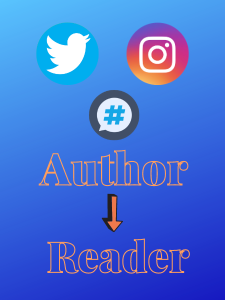
Anyone who has used social media for a while will be familiar with #hashtags and their purpose. Nevertheless, just in case someone new to social media is reading this, here is a brief overview.
Hashtags are a way for users to highlight content as being relevant to defined topics, themes, events, conversations, etc. In effect a hashtag is the equivalent of a keyword that people use in descriptions of their product or service. Hashtags always commence with the # sign. This is immediately followed, without any space, gap, or punctuation, by the defining text. Where the text comprises more than one word, these must be strung together, again without any space, gap, or punctuation. Unless this is done the systems that monitor hashtags will not be able to read the full content. They will only recognise the #and immediately following text. For example: #authorevent will be read in its entirety and therefore indicate the content is related to exactly that: an author event. However, if the hashtag is written as #author event, only the #author part will be recognised. Consequently, though the content will be identified as relevant to authors it will not serve the user’s intent to draw attention to some event.
Hashtags are also a means by which anyone interested in a specific topic, subject, theme, etc., may locate content relevant to it and where they may also find people with similar interests. Hashtags first came into use in 2007 and have since grown exponentially in popularity. Further information may be found in the previous Hashtags (#) article.
Though initially introduced for use with Twitter tweets, where they remain very popular, most social media sites have since adopted the facility, some to a greater extent than others. Twitter and Instagram users remain the most prolific users of hashtags consequently, the decision was made to concentrate on those two for this article. Consideration will be given to expanding the reach, if there is subsequent demand for insights into the use of hashtags with other social media platforms.
Some may ask why this discourse only focuses on 15 hashtags? The majority of articles relating to hashtags tend to simply provide a little background followed by endless lists of tags without any further insight. This does not really assist potential users of the tags. The intent here and in subsequent similar articles is to provide some general observations with respect to each of the named hashtags, thereby enabling the user to make a more considered decision.
As the title implies, this article focuses upon a few hashtags authors may use to connect with readers. It is proposed, over time, to publish additional articles related to various different authoring hashtag styles e.g. for connecting with fellow authors and writers; for connecting with self-publishing authors; for marketing books, etc.
One thing to always remember is the purpose of hashtags: to assist people (in this case primarily readers) in finding what they are looking for e.g. their next read in a genre they enjoy; writing insights; connecting with likeminded people; engaging with authors they enjoy, etc.
Regrettably, many authors abuse the hashtag facility by utilising inappropriate ones in an attempt to boost their self-promotional tweets and posts. To provide the information below, many #hashtags were examined and many had to be discarded because of this inappropriate use. Users (authors in this instance) should bear in mind a major constituent of social media is: to build relationships; to share meaningful content ; to engage in a positive manner; to relevantly contribute; etc. Of course, provided it is minimal within non-promotional hashtags, the occasional mention by an author of their own work may be acceptable but they should keep in mind, doing so may in fact put people off, especially if the content is not relevant to the hashtag. Constant advice is for people to remain on topic when contributing to a discussion.
Now to the primary subject of this article. The following should be noted before perusing the table below:
Hashtag choice: Many hashtags have been examined. The aim is to provide fifteen relevant and usable options authors may utilise for connecting with readers. With the existence of hundreds, probably thousands, of hashtags it is not easy to find the most relevant but it is hoped the ones listed will assist those reading this article to achieve their aim.
General observations: These are based upon casual examination of a selection of tweets and Instagram posts which utilise the tag.
Popularity: The popularity of a hashtag has been determined through general observation and a few statistics encountered. The writer in unable to guarantee complete accuracy of the rating. Some of the tags listed below are top level under which users may also discover sub tags that may be more appropriate to purpose.
Reader chat: Readers sharing about their lives; books read or waiting to be read; reading experiences; and some miscellaneous insights or thoughts. Other similar identifiers are equally general and hopefully self-explanatory.
Gender: Though the percentage breaks appear similar for all the hashtags it is not so in all instances.
Age range: Again, the split may appear similar throughout, however, there are marked differences in some instances.
#HashtagTwitter(General
Observations)
(General
Observations)
Gender
(Approximate
Split)Primary User
Age Range#bookcommunity Popular
Book sharing.
Reader chat. Popular
Reader life.
Reader chat.
Book sharing.
F – 66%
M- 34%TW & INST
18-34#readingcommunity Popular
Reader book
recommends. Semi-popular
General reader
and reading chat.F – 45%
M – 55%TW – 18-34 +
percentage 35-54
INST – 18-34#bookishMostly promotion.
Some book sharing. Popular
Reader chat.F – 55%
M – 45%TW & INST
18-34#mustreadMostly dirt book
marketing with
occasional author
interviews.Book promotion.
Reading recommends.
Some reader chat.F – 49%
M – 51%TW – 18-44
INST – 18-34#bibliophileReader chat.
Book recommends. Popular
Reader recommends.
Reader chat.F – 49%
M – 51%TW – 18-54
INST – 18-34#booknerdReader chat.Reader chat.F – 57%
M – 43%TW – 18-34 +
limited 35-54
INST – 18-34#booksbooksbooks Popular
Reader recommends. Popular
Reader recommends
and reviews.F – 56%
M – 44%TW – 18-64
INST – 18-34#bookloversReader chat.
Some reader recommends. Popular
Reader chat.F – 52%
M – 48%TW – 18-44 +
limited 35-54
INST – 18-34#lovebooksBook recommends.
Reader chat.Reader life.
Reader chat.F – 49%
M – 51%TW – 18-54
INST – 18-34#bookpicBook chat.General book chat.
Reader life.TW: F – 100%
INST:
F – 55%
M – 45%TW – 25-34
INST – 18-34#readerlife Limited number
of tweets.
Reader chat.Reader recommends.
Reader chat.F – 49%
M – 51%TW – 25-34
INST – 18-34#booksaremylifeBook sharing.
Reader chat.Book reviews.
Reader chat.TW: M – 100%
INST:
F – 55%
M – 45%TW – Unclear
INST – 18-34#bookcrazyBook sharing.Book sharing.TW: Unknown
INST:
F – 55%
M – 45%TW – Unclear
INST – 18-34#readmoreReader chat.Book reviews.
Reader chat.F – 49%
M – 51%TW – 18-54
INST – 18-34#fridayreadsBook sharing.Book sharing.
Reader chat.F – 53%
M – 47%TW – 18-44
INST – 18-34#bookreadBook sharing.Book sharing.
Reader chat.TW: F – 100%
INST:
F – 55%
M – 45%TW – 18-24
INST – 18-34
Some other things to note:
Professional and experienced advice is to utilise a mix of popular and less popular hashtags. Popular ones will provide broader exposure but at the same time mean the tweet or post may easily get lost among the preponderance of content. Less popular tags will help the tweet or post gain higher profile and therefore, hopefully, greater attention.
There is also the matter of language. In Twitter the language utilised is primarily English whereas with Instagram there is a considerable mixture. This may impact upon how usable a hashtag is for gaining the attention the author seeks.
Anyone may create a hashtag consequently the list of available options is endless. Prior to utilising one users are advised to check it out by entering the tag (with the #) in the respective site’s search bar and examine the tweets and posts that come up.
Related articles, which readers of this may also find helpful:
Hashtags (#) – Provides further background and information.
Best Times for Posting on Social Media – Provides a general guide to optimum posting times.
March 12, 2021
Seeking Solace: Finding Joy After Loss by Amy L. Bovaird

In this memoir the author shares her experience of three different and difficult types of loss. The loss of her babies; the loss of her marriage; and the loss of a loving father. Other losses are also mentioned (loss of sight and loss of her mother) but do not form an integral part of this account.
To deal effectively with each loss the book is broken into three sections. Each begins with an overview of the circumstance under discussion which is then followed by a series of chapters that expand upon the author’s experience. To each devotionals, intended to inspire, guide, encourage, and help readers, are added.
Throughout Amy’s faith, trust, and reliance, upon God’s grace is constantly evident. However, unlike others who do not, sensing a need to cover their accounts in constant positivity because of their professed faith, truly share the reality of their emotional and mental difficulties, these accounts are honest and very real. The author reveals her raw humanity and very real difficulties, at no time adopting a rose-coloured spectacles viewpoint. Though these accounts never go into unnecessary gratuitous detail they do cover all that is pertinent. The reader is left in no doubt of the very real, sometimes longterm, struggles the author faced. Her honesty is to be commended.
The writing style combined with the short, concise, sections make this book easy to read, even though for those of a sensitive nature it may be upsetting. Readers will find themselves sympathising and empathising. They will also find admiration for the author’s positive and trusting attitude in the face of adversity and painful loss and for her strong faith.
The book is available in paperback, digital (e-book), and audio formats. It also has text to speech enabled and supports screen reading. Due to her own sight loss Amy Bovaird is aware of other sight challenged people’s need.
The book, including a Large Print edition, is also available from the author’s website.
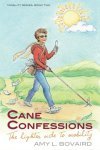
March 2, 2021
8 Link Shortening Services

This resume replaces a previous article on the subject of link shorteners. Some of the services mentioned therein have been withdrawn while others are no longer considered suitable for independent authors or personal individual use. To avoid readers having to switch back and forth, the information regarding those that remain active and are thought suitable is reiterated below. However, a primary difference between the two articles is, in this one only free options will be looked at.
URL link shorteners are tools that provide a short form, clickable, code for lengthy, ungainly, and unsightly links.
There are numerous companies and organisations which provide facilities for users to obtain shortened links. However, before considering them, the benefits and dangers/drawbacks of using shortened links will be considered.
Benefits Take up less space. (Important in sites that limit character input e.g. Twitter.)More aesthetically pleasing. (Shorter and less ungainly.)Easier to remember. (Especially if user is going to add it into another system without using copy/paste.)Diminishes fear of long urls which some view as suspicious or spammy.Most shortening sites offer some degree of tracking metrics. Dangers/Drawbacks Some use them to facilitate spamming. (Bombarding numerous users with unsolicited adverts, etc.)To hide the true source. (Often for the purposes of phishing (to obtain personal details); spreading viruses; etc. In other words, malicious behaviour.)Some websites, due to the possible dangers, will not accept shortened links.How short links workTo create a short link all the user has to do is copy and paste the full URL into the panel each system displays. A short link is then automatically created. Users may create short links for their own content, or for content from other sources, that they wish to share e.g. via blog, website, social media, etc.
Once created within a valid, recognised, environment (registered provider) systems will recognise the shortened link and utilise it by redirecting to the originating source. Short links are simple, clean, efficient and aesthetically pleasing.
Link ShortenersAn internet search for ‘link shortener’ will return multiple results which readers are free to peruse at their pleasure. However, in this article just a few of those that offer a free service or free alternative are mentioned.
Note: The list is in no particular order nor is one service is being recommended above another. Nor has every site been tested by the writer.
bitly.com – Probably the most well known shortening service. Users have to set up an account but it is easy to do and requires minimal information. The site has both free and paid plans. The free option also contains some basic statistics that help the user track short-term activity. Naturally, paid accounts provide more in-depth insights but for the average user the free option is more than adequate. A useful asset, in all plans, is the ability to personalise the latter part of the short link.
ow.ly – This free service is provided by Hootsuite, the post scheduling service. Hootsuite is an excellent system within which multiple posts and tweets may be drafted and scheduled. However, this is not the place to discuss those merits. An account is required but it is a straightforward process. There are free and paid options with varying functionality. The free plan is suitable for most individuals. Users should note the shortening facility may only be utilised within the posting system where the post is usually schedule for publication at a later time. Nevertheless, the short code may still be utilised with this workaround: draft a post, just a few words will do, enter the full url and select the option to have ow.ly shorten the link. The shortened version may then be copied and pasted where desired. The draft post may then be deleted.
tinyurl.com – A simplistic, free, easy to use, quick, service. The front page is not of a particularly neat design nevertheless, many find the service useful. It also has the advantage of enabling the user to customise the shortened link. There is also an option for adding it to a browser’s toolbar so all the user has to do is click it to create an automatic short link for the page they happen to be on. As said, this is a simplistic service and therefore there are no analytics but in the general scheme of things that should not prove too much of a deterrent.
rebrandly.com – This appears to be a very versatile service for all plans, including the free one. Short links may be branded (maximum of 500 links in free plan) and created for a user’s own domain (maximum of 5 with free plan). History, analytics, and GDPR compliance are all included. An account is required but only minimal details having to be provided. The system also enables a QR Code to be created from the shortened link. A knowledge base and video tutorials are also available.
hyperlink.com – The free option is limited to 100 links and therefore may not be suitable for busy authors or individuals. Nevertheless, it has some good features which may encourage users to upgrade to a paid plan however, these commence at $39 per month which is probably beyond the reach of most independents. The system provides apps, in all plans, for mobile (Android and IOS) as well as the functionality to create QR Codes. In addition there is a live dashboard and option for real-time notifications at hourly, daily, or weekly intervals: the choice is the users.
tiny.cc – Note: This is a different service to the tinyurl.com one referred to above. The free account permits the creation of up to 500 links. These may be created on-the-go, without the need for an account. However, the link will not be stored. If a user wishes to retain a link and have recall to it at a later date they should set up an account. The normal information of username, email address, and password are required. The system also enables the creation of a QR Code and provides some statistics. For those who wish for more, the paid plans commence at a reasonable $5 per month (reduced to $55 per year if annual payment selected).
cutt.ly – A completely free service that allows for branding, the creation of QR Codes, and realtime analytics. The function may also be added to browser toolbars enabling the speedy creation of shortened links for any page the user is on. Users also have the option to signup for an account.
buffy.ly – This is part of the Buffer post scheduling service (similar to the Hootsuite one referred to above). Users have to signup for a free account with the usual details of email address and password. In the past it was possible to create shortened links without the need to enter the post creation function however, due to abuse, the shortening facility is now only accessible from within the user’s Buffer account. Naturally, there are paid options for those who want more but the free plan is suitable for the majority of authors and individuals. To overcome the issue of creating a short link without the need to post, a similar workaround as used in the Hootsuite system may be utilised: draft a post, just a few words will do, and enter the full url. The system will then automatically convert the url to a buffy.ly short link. The shortened version may then be copied and pasted where desired. The draft post may then be deleted.
Note: In all cases the user needs to ensure the complete originating url is entered for shortening. If not the shortened link is unlikely to reach the intended destination.
Terms and ConditionsImportant: Anyone who plans on using any link shortening service is recommended to carefully read the terms and conditions and requirements of each provider. They are not all equal and may have conditions that will not fit with the user’s purposes or intentions.
Built-In ShortenersReaders may be interested to know some sites, social media and website, also comprise automatic link shortening software. For example:
twitter.com – In an effort to protect users from malicious sites and malware, and to maintain the maximum possible number of characters for a tweet, Twitter has developed its own, automatic, link shortening service (t.co). Whatever the length of any link entered in a tweet, it will be converted to a 23 character url, even if the original has less than twenty-three characters. Consequently, when using Twitter there is no point in obtaining a shortened url from another service. Note: This is not a shortening service per se: it cannot be utilised independently. Nevertheless, it is a useful commodity for users that Twitter had the forethought to provide.
wordpress.com – WordPress automatically provides shortened urls for posts and pages. Under the recently revised system the website or blog owner may, either when drafting a post or subsequently by entering the edit option, obtain the shortened url by clicking the green Jetpack icon (top right of screen). The ‘Shortlink’ will be displayed with the option to copy it. From outside the WordPress system the shortened url may be reached by clicking the three dot ellipses displayed next to the Follow option toward the bottom right of screen. These may be used in the same manner as any other shortened url wherever obtained. Though WordPress has been specifically highlighted it is presumed other website hosts also provide a similar facility.
ConclusionWithout question shortened urls are useful. They are clean, concise, aesthetically preferable, and benefit the user by taking up less space than conventional urls.
As outlined above, there are multiple providers and services for obtaining shortened links but they are not all the same. Each has its own terms and conditions, which users are strongly advised to consult prior to using or signing up for any service.
As with any digital online commodity in the modern world, there are dangers. Hacking and cyber crime are in constant development becoming increasing sophisticated with each passing year. Users are therefore advised to exercise caution and seek to confirm the source of any shortened link they receive from an unknown location or person. Those sending them should also be aware of perceived dangers and accept people may not click on their link if they do not know them.
Though this article replaces the previous one, anyone interested may still access the old one here.
Disclaimer: Other than having utilised some of the services, neither T. R. Robinson nor T. R. Robinson Publications has any affiliation to any of the companies or organisations referred to above. Nor do either receive any remuneration for mentioning them.
This article is longer than is usual but it did not really lend itself to being split. Apologies to any who have found it unwieldy. Nevertheless, it is hoped readers have found the information provided helpful.
February 26, 2021
The Lamplighters by Emma Stonex – Editorial Review
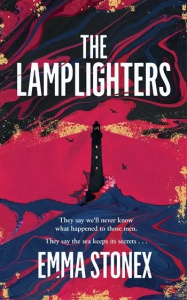
This mystery is inspired by a real event though the book itself is fictional. The tale revolves round the lives of three lighthouse keepers and those of their partners back on land. It delves into the psychology of both and effectively depicts what it was like to be a lighthouse keeper and how it feels to be left behind for weeks and months on end. The author has certainly researched the subject well. Her understanding of the constraints, psychology, and emotions evoked are consistently evident. In addition the nature of the sea with its wayward, wild, unpredictable, and dramatic ways, is clearly portrayed. Indeed the reader may sometimes feel they are in the midst of the storm and crashing, towering, waves.
The writing style is different to most books and though it provides detailed insight and analysis of the events and conditions it does not really draw the reader in. If anything they will feel a spectator waiting to see the ultimate outcome. However, this is an interesting read for anyone who wishes to know what the life of a lighthouse keeper was like and to that end may be seen as a historic account. Nevertheless, it sometimes becomes a little tedious as it dives into the intricacies of the characters thoughts and considerations, especially when they do not appear to have any relevance to the story. It is not until almost half way through, when the ethos of the tale starts to formulate, the reader may start to feel engaged. The unfolding is rather slow which in some tales may have its place but does not really work for this one.
As the mystery is revealed there is an element of the supernatural that surprisingly fits. Loss and betrayal are also present. It is an evocative tale but overall, despite the premise encouraged in the description (referred to as the blurb by many), does not really fulfil expectations. Nevertheless, as already outlined, there is considerable insight which is of its own interesting. The author’s research has certainly been far reaching and thorough, as may be seen from the acknowledgments listed at the end of the book.
Readers must decide for themselves whether the climax provides a satisfying conclusion to this mystery and perhaps to that of the real event upon which this book is based.
The book will be published by Pan Macmillan on 4 March 2021. It is currently available for pre-order from the following retailers:
The edition read was obtained by the kind generosity of the author and publisher from NetGalley.
February 16, 2021
What is HTML?
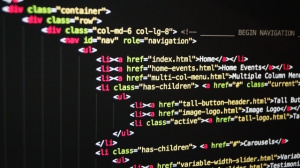
Anyone who manages a website, blog, or other digital interface will have encountered references to HTML. But exactly what is HTML? The acronym stands for Hyper Text Markup Language. HTML is the standard language utilised in the creation of web pages.
Tim Berners-Lee, a physicist at the CERN research institute (The European Organization for Nuclear Research) in Switzerland invented HTML. His first version was introduced in 1991 but has since undergone substantial development leading it to now being considered the official web standard. The World Wide Web Consortium (W3C) subsequently became responsible for HTML specifications, maintenance, and development.
HTML is NOT a programming language. As the name implies, it is a markup language (a computer language) that defines structure.
How HTML WorksHTML documents are files that have the .html or .htm extension. The code enables browsers to read the file and convert the content into a format internet users may view. The code essentially provides the means for structuring a web page and document.
Each page consists a set of building block tags (also referred to as elements) which facilitate the structuring of a web page: sections, paragraphs, headings, etc. When writing the code each element requires placing within defined tags for the system to recognise what is required. For example: ; syntax; (the ‘/‘ indicates where the element closes);
(indicates opening and closing of paragraph element. The required text is inserted between the two indicators). There are different tags for different elements i.e. text, image, audio, video, etc. Tags do not appear in the content but are what determine how the text will be displayed e.g. italics, bold, heading, etc.Pros and Cons
As with most things HTML has its strengths and limitations (pros & cons).
Pros Widely recognised and used.Runs naturally in all web browsers.Free.Clean and consistent.Recognised as the official standard.Maintained by W3C.Integrates with other computer languages.Reasonably easy to learn. Cons Mostly used for static web pages.Inadequate to create dynamic functionality.Each page has to be created separately even if utilising same elements.Some browsers embrace new enhancements slowly.Older browsers do not always display modern tags.Dynamic FunctionalityAs indicated above, HTML is insufficient for the purposes of creating fully active web pages from which websites and blogs are constructed. In order to provide the functionality expected from a website or blog it is necessary to utilise programming languages such as CSS (Cascading Style Sheets) and Javascript. CSS is responsible for such things as: style; background colour; layout; spacing; animation; etc. Javascript adds activity such as: pop-ups; slides; photograph galleries; etc. However, this discourse is not about those and no further detail will be provided here.
Readymade WebsitesBearing in mind this website is principally dedicated to providing lay authors and readers with useful and hopefully helpful information this topic is being considered from their viewpoint.
When establishing a website or blog most laypeople utilise established hosting services, such as WordPress, Blogger, etc which provide readymade, often free, templates. Consequently, the user need not have any intimate, or really any, knowledge of HTML. The host provider will have already set up, behind the scenes, HTML programming that converts any input plain text into the required HTML format.
Though, as stated, there is no need for the user to have any knowledge or experience of HTML, those who have, and who wish to use it, may still opt for entering content with HTML coding. They will simply need to choose the appropriate option. For the rest, the simplicity of just having to enter plain text, images, etc., and allowing the system to deal with the coding is ideal.
ConclusionIt may not be necessary to have knowledge or experience of HTML but, because it is often mentioned, or at least referred to, having a slight insight does no harm and in fact helps dispel any confusion or uncertainty.
HTML is a necessity if information is to be presented in the best format possible. The lay user may therefore be grateful to hosting companies and organisations for dealing with it behind the scenes, thereby negating any requirement for them to input any coding. It was not always so.
If anyone truly wishes to learn HTML, it is apparently easy to do so. Courses may be found on the internet.
February 12, 2021
Book Prize Trends 2020

Undoubtedly which books are proving popular at any given time is of interest to authors and may also be so for many readers. Authors, because they like to know if their own books fall into any of the categories. Readers, simply to see if they may be able to find their next read among the lists.
Where an author finds their book falls into a popular genre that popularity provides them with a further avenue for publicity and marketing. It is only natural to take advantage of such an opportunity. However, before any author reading this gets carried away they should note there is general advice not to seek to write in a different genre to their usual simply to profit from it. In most instances the likely outcome is a book that is less than it should be. Of course, as with anything, there have been exceptions and some authors have gained by taking up the potential but they are in the minority. There is also the question of whether, despite any money made, they find writing such books fulfilling.
Defining TrendsThere are numerous respected book prizes and book of the year selections, which may help identify trends, though, as will be seen, that is not always the case. For this article a few of the 2020 winning titles have been examined to see if there has been a defined trend.
Note: The writer has not read any of these books and the information shared below has been gleaned from retail and internet sites with the sole intent of trying to identify any possible trend(s).
Booker Prize – Shuggie Bain by Douglas Stuart
This novel is based upon the author’s personal experience. It is an account of Scottish poverty and alcoholism.
Genre: Bidungsroman, probably, like the author of this post most readers will not have encountered this genre name before. It is a German word utilised to identify a book that focuses on the psychological and moral growth of the protagonist from youth to adulthood. The book is also identified as falling within the Gay Novel genre. Bearing in mind the bases of this story some may consider it also tips over into the memoir category, or at least autobiographical fiction.
~~~~~~~~
Blackwell’s Book of the Year – A Kind of Spark by Elle McNicoll
This is a novel that has also been designated the Children’s Book of the Year. Again it is set in Scotland and is about an autistic eleven year old.
Genre: Children’s Fiction.
~~~~~~~~
Waterstone’s Book of the Year – Hamnet by Maggie O’Farrell
Set in the British Elizabethan period this is an acclaimed novel that has the death of Shakespeare’s eleven year old son as its basis. Some identify it as a tale about marriage and grief.
Genre: Historical Fiction
~~~~~~~~
Costa Book of the Year – The Mermaid of Black Conch by Monique Roffey
A novel that is set on an imaginary Caribbean island. It mixes mythical components with realistic life.
Genre: Modern and Contemporary Fiction. It has also been identified as falling into Relationship stories.
~~~~~~~~
Goodreads Readers Choice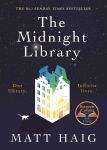
Goodreads has multiple categories for its annual reader choice awards. To identify each and every one here would make this resume unwieldy. Therefore, just to provide some idea the Best Fiction winner has been selected.
Best Fiction – The Midnight Library by Matt Haig
Genre: Science Fiction and Fantasy Fiction.
~~~~~~~~
Overall TrendAs may be seen from the details shared above, no defined trend has emerged. Disappointing but a clear indicator of how unique human beings are. Something that should always be born in mind. It is foolish to think everyone will like everything. New authors often fall into this trap: that their book is for everyone. But that is another topic.
Does this mean it is impossible to identify whether there is a trend? Not entirely. The books named above are only the overall winners. What about those that were short listed? An examination of some of those lists resulted in the following findings:
Most popular genreHistory: Fiction (drawing upon, or based upon, various historic events) and Non-Fiction (actual history).
Temporarily popular genreBlack history; Black culture: Understandable, in view of some of the high profile events of 2020. These became particularly popular in the latter half of the year.
Randomly popular genrePsychology (mostly non-fiction); Memoir/Biography/Autobiography (probably prompted by some high profile ones e.g. the Obamas’).
Note: It is appreciated some of these genre have been popular throughout the years and will probably remain so, however, the overview in this article is based upon findings for 2020 only.
ConclusionAs may be seen, though there is no overall genre among the winning books, the short lists imply History, in its various forms, was the most popular genre for 2020. Of course, tastes, likes, and dislikes change over time and may even be influenced by so called fashion or, perhaps in these social media dominated times, trends would be a better word. Consequently, which genre or genres become popular in 2021 may be different. It is noticeable, despite their general popularity over the years, romance has no mention in the above resume and memoir only minimal.
Some authors may be tempted to follow the highlighted trends and write books to meet them. However, they are advised not to do so simply for the purpose of seeking profit.
Intentionally, so as not to detract from the primary topic, no book, retailer or author links have been provided above. Anyone interested in learning more about the books mentioned may do so by simply searching against the book title.
Disclaimer: Neither T. R. Robinson Publications nor T. R. Robinson have any affiliation with any of the publishers, authors, or retailers named. Nor do either receive any renumeration for highlighting, mentioning, or otherwise referring to them. Nor are either endorsing or recommending any of the books or authors.



